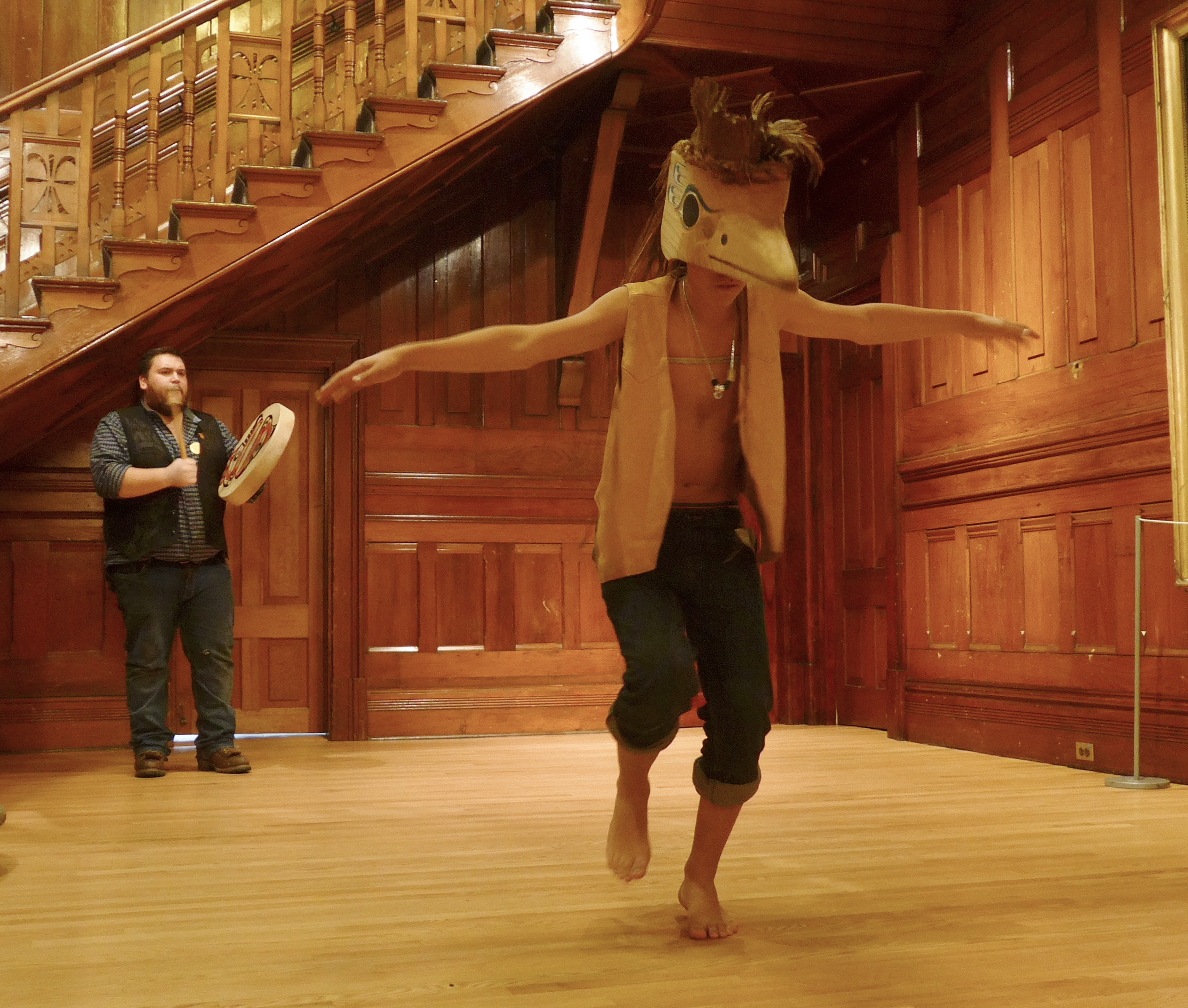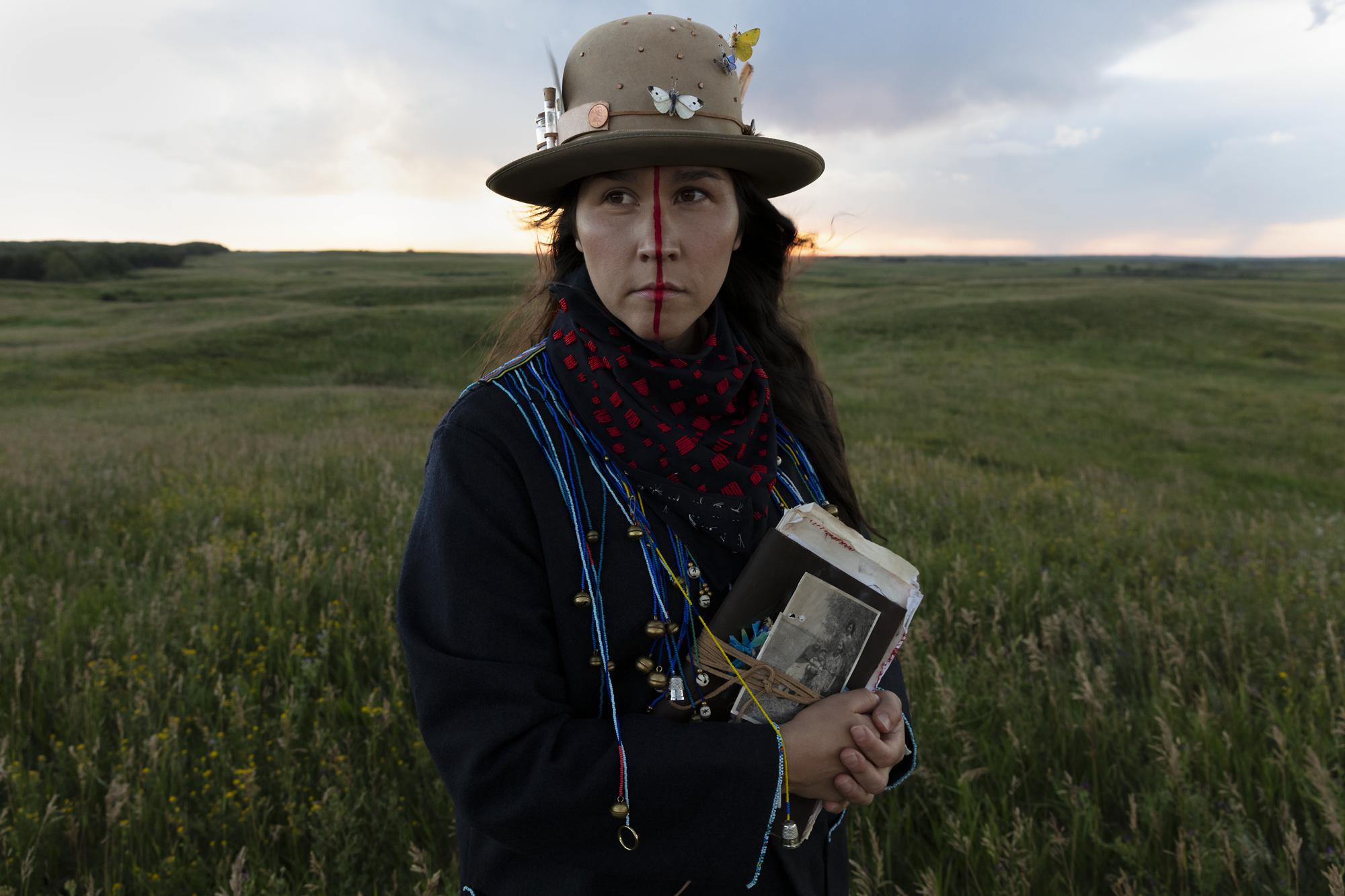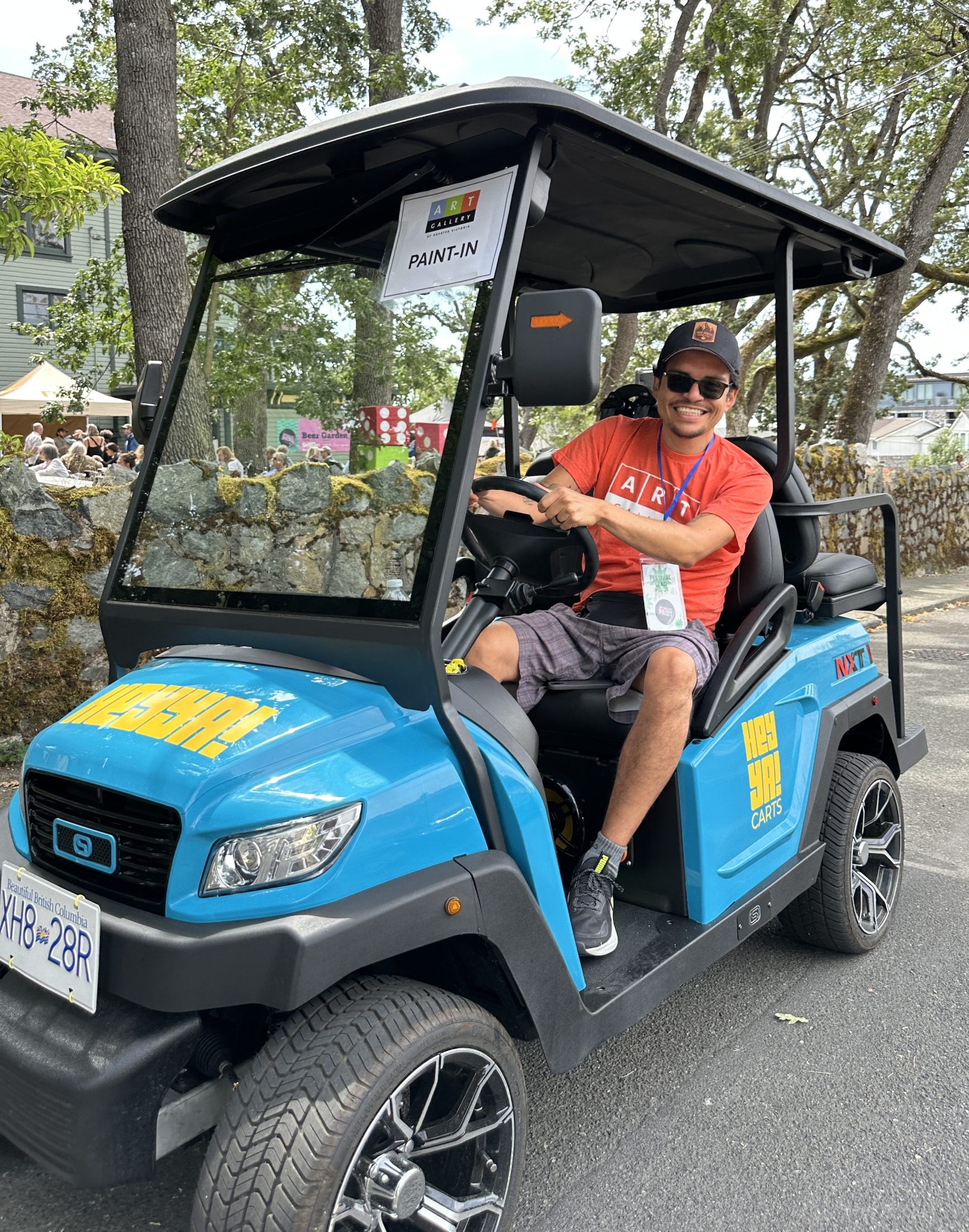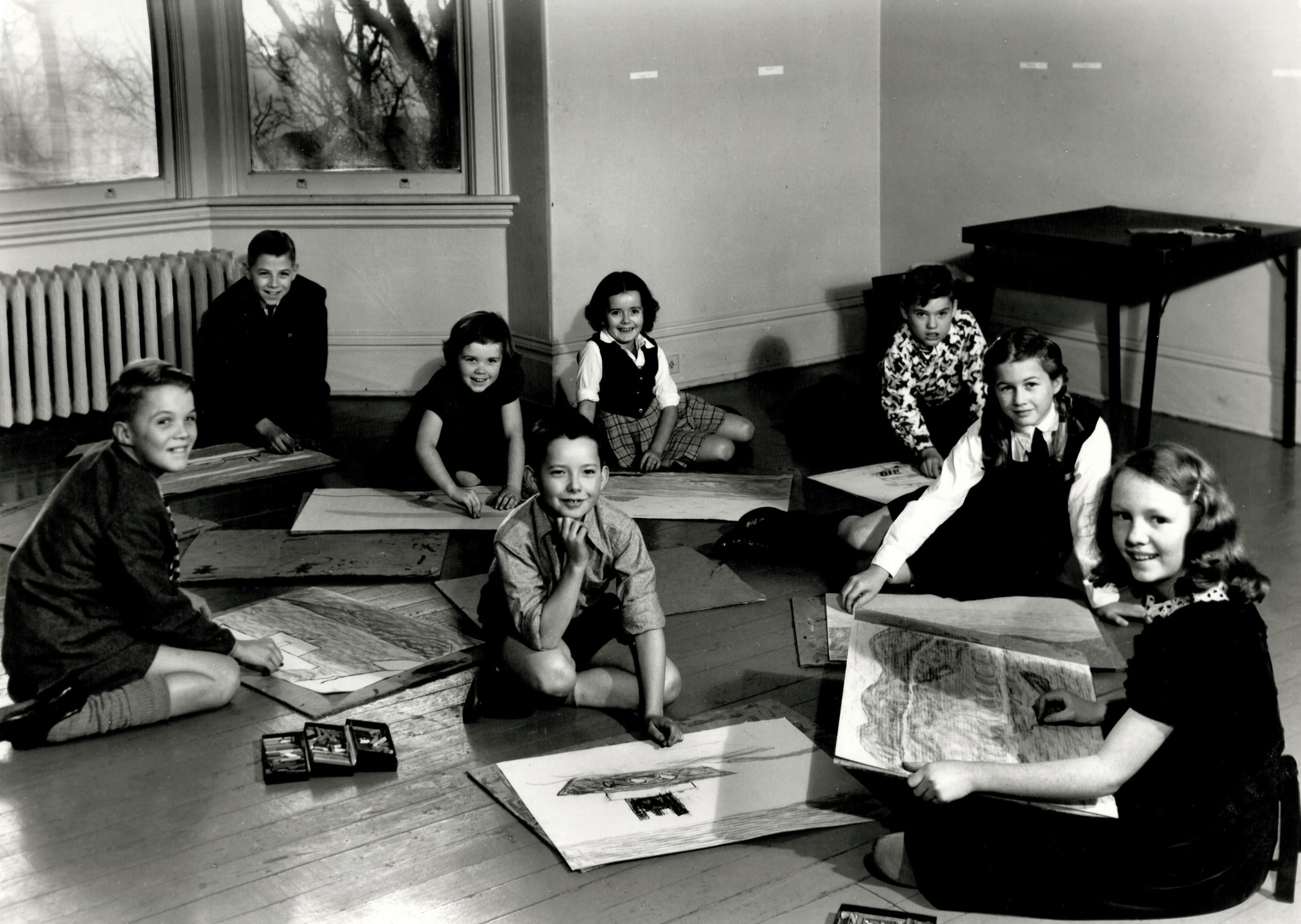By Audrey Wang, AGGV Volunteer
After a 3-month hiatus over the summer, Family Sunday at the AGGV resumed with much gusto in October! The event was well attended by families who immersed themselves in the art and environmental activities inspired by Water Work Space, the interactive, research-and-development exhibition that combines art, activism and community engagement. We were fortunate to have beautiful, sunny weather that afternoon, which allowed some of the activities to take place outdoors in the courtyard all dressed in fall colours, courtesy of the maples and Garry oaks.
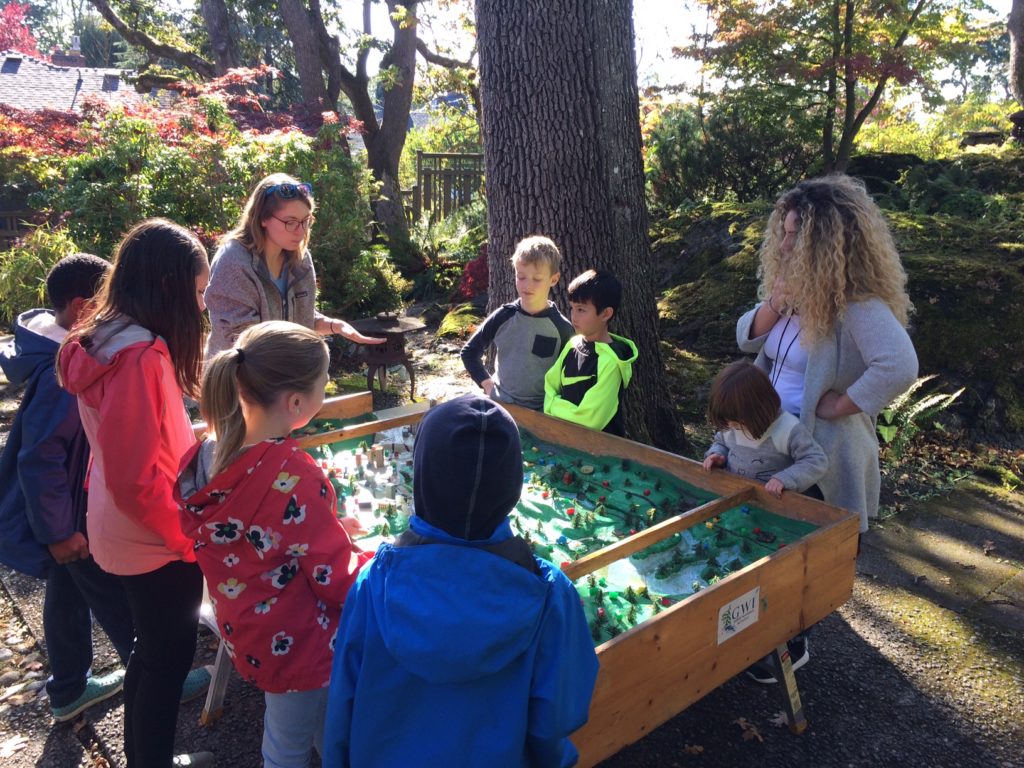
A facilitator from the World Fisheries Trust (WFT) put on an interactive presentation with a large watershed model of Victoria and the Gorge Waterway. With the help of the children, she demonstrated the vast amount of pollution generated by Victoria’s population that ends up in the ocean, inciting the children to come up with ways to be friendlier to the environment.
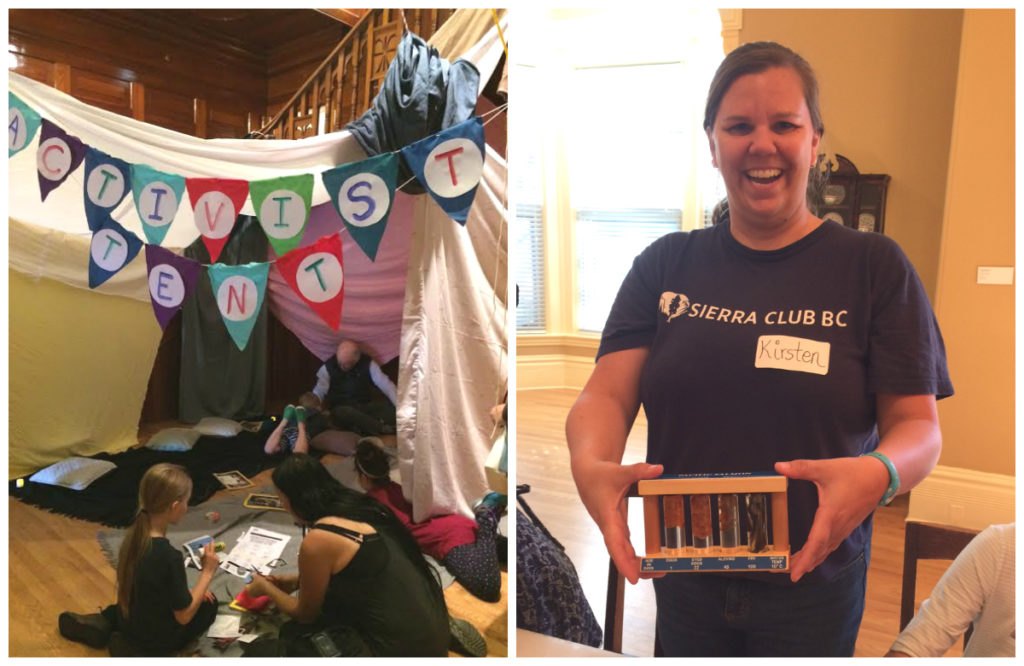
Back inside the Spencer Mansion, an “activist camp” – more adorable than guerilla – was set up under the grand staircase, allowing families to play make-believe while trying their hand at some of the art activities. Among these were First Nations-inspired images of salmon, which the children emulated and made their own with coloured pens and collage. At hand were volunteers from the Sierra Club BC who taught the kids about the importance of salmon to the environment.
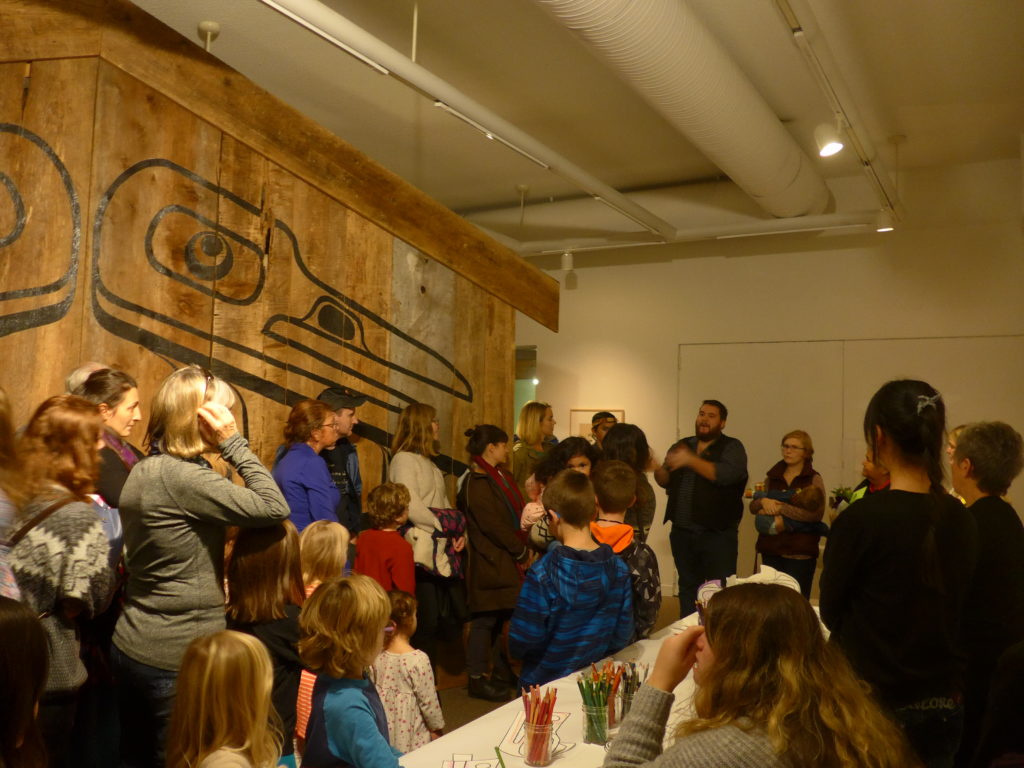
November’s Family Sunday was inspired by the exhibition Point of Contact, and we were honoured to have artist Hjalmer Wenstob and his family in attendance and being a major part of the afternoon’s activities. Hjalmer’s art installation of a traditional whaler’s Nuu-chah-nulth longhouse was the perfect cozy spot for storytelling sessions. Assisted by his brother Tim, Hjalmer told his people’s version of the “Great Flood” story, using elaborate masks he had carved from red cedar to illustrate elements of the story. The children (and their parents) had the chance to try on these large heavy masks which would have been used in dances. Combining traditional craft and modern technology, Hjalmer had installed smartphone screens inside the mask so that the participants wearing it could watch a video of the dance associated with the mask they were wearing. Outside the longhouse, Gallery volunteers facilitated art activities in mask-making.
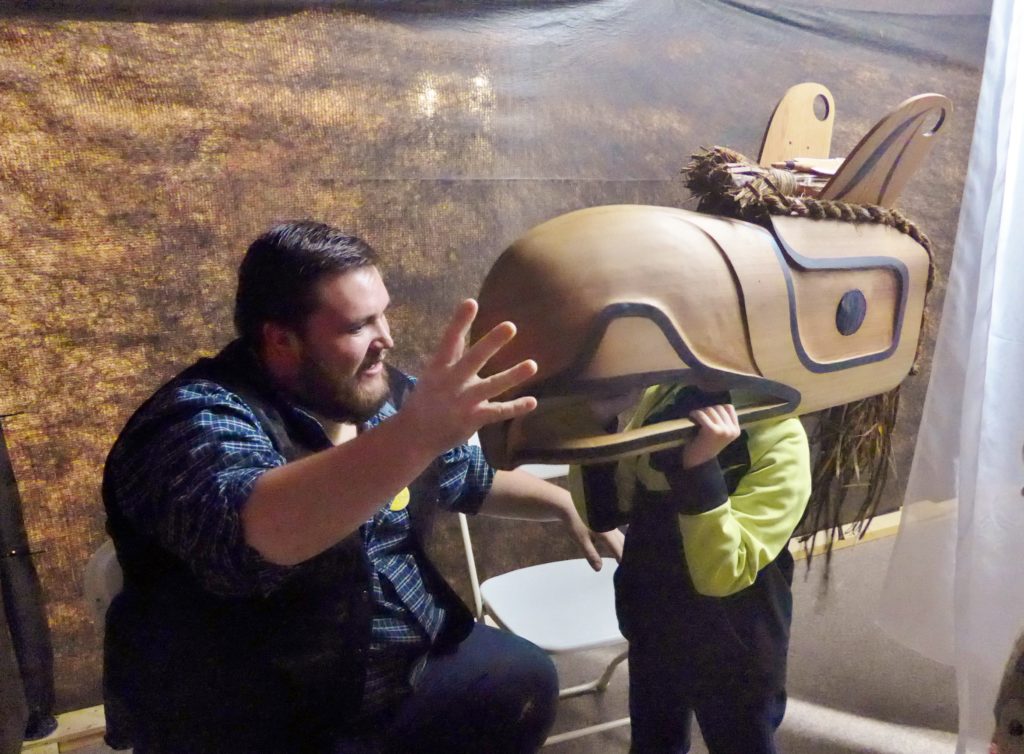
Wearing one of the masks that Hjalmer had carved for him, Tim performed a dance from a song he had written himself (see feature top image), much to the appreciation of the families present. Adults and children alike cheered loudly as Tim reached the crescendo of the performance that saw him twirling and spinning at great speed to the beat of Hjalmer’s drum.
It was a wonderful afternoon of storytelling, performances, art-making and comraderie, and through the activities, the families learned all about the Nuu-chah-nulth culture.
Family Sunday takes place on the third Sunday of the month. The next installment will be on December 17, 2-4 pm.
